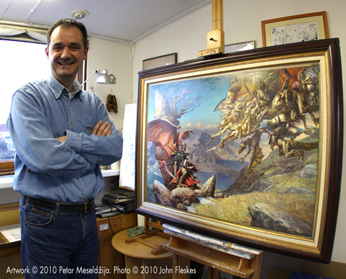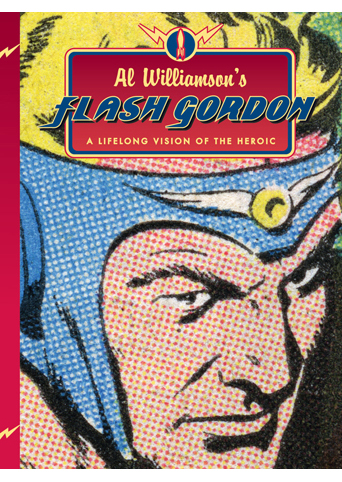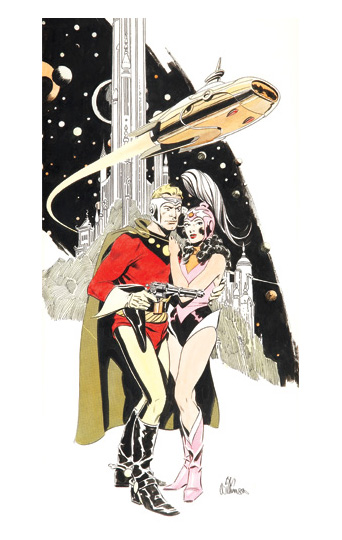
I have just posted an interview with Petar Meseldžija on the Flesk website. You can jump ahead and read the entire interview, along with many sample paintings and details by clicking here.
I am pleased to announce I will be publishing Petar’s book, The Legend of Steel Bashaw (click to see the details on this book), this fall 2010. This interview covers what The Legend of Steel Bashaw is about, and about his painting techniques and about himself.
I first became aware of Petar Meseldžija in November 2009 when I received a copy of Spectrum 16. Petar was awarded a Gold award in the Book category for one of his paintings from The Legend of Steel Bashaw, published as Baš Čelik by the Serbian publisher Zmaj.
A visit to Petar’s website educated me on the fact that he lived in the Netherlands. With my planned trip to the Stripbeurs comic show in Breda, Netherlands coming up in early March 2010, I wrote an email to Mark Thelosen, my contact and host for our upcoming adventure, if he was aware of Petar. With Mark’s help, Petar and I were communicating through email two days later. Within a few weeks of my first noticing Petar’s work, I developed a relationship with him, received a copy of the Serbian edition of The Legend of Steel Bashaw, and we came to an agreement for my publishing his book in the U.S. (Please visit the book details on our website here.) Furthermore, it was a pleasure to meet Petar and his wife, Anita, and have the opportunity to visit their home and see his original paintings a few days after the Stripbeurs Breda show.
Petar’s work is a successful blend of fine art and illustration. I was in awe at how impressionistic his paintings were up close. At a short distance away and in reproduction the pieces appear tight, but then walk up for a detailed viewing and they again become abstract with thick paint raised from the surface, with deliberate powerful strokes. It also turns out that Petar is a wonderful, kind person, who can be witty and humorous, as well as deep and compelling. One thing is for certain; we are all the better for his desire to paint, in that we have more beauty in the world.
I asked Petar if he was willing to write a little about himself, his painting technique and about The Legend of Steel Bashaw. He came back with intriguing and sophisticated responses to each question, proving behind his funny exterior and joy for life, the inner artist is contemplative and tireless in his efforts to improve his work and in producing the stories he wants to share. I have included pictures throughout from my enjoyable visit to his home and our time spent together in Breda.
You can read the full interview with Petar by clicking here.
Enjoy,
John
John Fleskes
Flesk Publications



